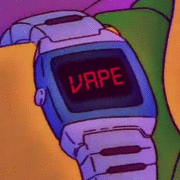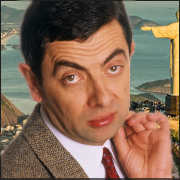|
Post works of great photographers and what you can learn from them. This thread is about analysis of great work and how what makes it good so we can learn to incorporate it into our own work. Recently I've realized I dislike the static feel of my images. They need more dynamic composition. I squat, even lay on the ground like a weirdo in order to compose as long as it results in a more interesting angle. Yoga has been helpful! However, one element I've been neglecting are angles. Angles seem to add the most dynamism to an image. Finishing up Mary Ellen Mark's The Book of Everything today, I noticed how often she takes advantage of the Dutch Angle. It's usually done to fit all the elements into the frame, but more than that, it makes her images feel more 3d. Take this one of a baby crying.  This could have been perfectly been taken from a standard, level angle. Granted, Mary Ellen is working with a medium format camera for this so she has less room to work with so she's framing it by putting the baby and mother on the right side of the frame so it looks like the baby is reaching out. But it's the angle that gives it the feeling that the baby is reaching right out of the page.  If she didn't shoot this at an angle, the boy on the left would have probably been cut out.  Angling helps tell more of a story. In this photo we see a crack pipe on the dresser. That's just as important as the family sleeping or the Jesus statue.  Often, dutch angles are said to be used to make a capture more playful. And that's fair as far as it goes. But the framing is almost as important. In this picture, you can tell Mary shoots at an angle because it's playful but also, more than that, because she clearly wants to include the cats feet. If it were level, it'd be cropped out. If she were further back she wouldn't be as intimate as she is there. Her decisions help create memorable, dynamic photos. These pictures were sourced from maryellenmark.com More angled shots.   More considerations with angles: due to warping that happens on wide lenses, shooting an angle can result in more distortion. There is a case to be said angles and straightness. Often one of the first things you learn in photography is maintaining a straight camera. With more knowledge and will to be creative, a tilt can result in a better, less boring image. Food for thought.
|
|
|
|

|
| # ? Apr 25, 2024 14:35 |
|
I shoot graffiti on an angle usual full frame 14mm. I like the dynamic feel to it. Also I like to break rules.
|
|
|
|
Don't know if he's considered a master or not but I've got some of Peter Turnley's shots stuck in my head.   He's magnificent at achieving a sense of place in his photos. Currently a big influence. I also have been studying Joseph Rodriguez. I checked out Spanish Harlem from the library and have been studying it for weeks.  What influences have you been studying, Dorkroom? Jupiter Jazz fucked around with this message at 07:37 on Feb 15, 2021 |
|
|
|
I also have this book on the way. It costs 20 bucks on Amazon and is amazing. I'm gonna wear this book out. I'll be studying this a whole lot. I've got my first documentary assignment and it's documenting a black muslim woman. I plan on wearing this book out. Lots of nice interior shots of daily life. Highly recommend! The writing is also stupendous. Photo books rarely have writing in them but this is wonderful as an accompaniment.
|
|
|
|
That Sweet Flypaper of Life book looks great. I've been depressing myself with W. Eugene Smith's Minamata. For those who don't know the story behind it Minamata is a Japanese village that was poisoned by an industrial plant releasing mercury into the sea. A mysterious disease was appearing in the town, and it was getting covered up the the government and the corporation responsible. The book is as much words as it is photos, both are phenomenal. This pair of images has really stuck in my brain: 
|
|
|
|
been staring at this one a lot lately now that i'm getting back into studio shooting Walter Chandoha's cat Loco, shot in 1958 his technique involved up to six lights, and from what i can tell he is using 6 here: a main light, a fill, two strobes to illuminate the backdrop, two more strobes to illuminate the cat from behind to give the halo effect. in this one he was probably using his Hasselblad. he ended up having to buy an exposure meter for $500, around $4,600 in 2021 dollars, he says he couldnt really afford it but he didnt have a choice. without it he would have spent way too much time calibrating the backlights (taking a shot, waiting hours or days for it to get developed, making adjustments ad nauseum) and never would have been able to produce the volume of photos he needed to keep his career going this photo is a masterpiece, and even if i do manage to get to the level of precision, technical ability, and patience that was required to take it, i'll still have achieved it with a digital camera and lightroom
|
|
|
|
this week i decided i will try to recreate that shot, and then i'll be where chandoha was in 1958. after a morning of work, i got here: i used three lights instead of six, i couldnt get the halo with one flash so i had to put both in back and use a continuous softbox as a main light. this made it really difficult to avoid a silhouette, but i did what i could. i think the next step (aside from buying another flash) is going to be to position the backlights a little higher and see what happens. but i dont think im gonna be able to get the eyes to stand out like that with continuous light. also he had a tighter crop but that's easy enough to fix either way grey cats are easier to shoot in general, since a cat with white and/or black fur is going to end up with spots that are either completely black and/or completely white. gray fur means visible texture for the whole cat. yes i will keep making excuses for why my shots don't look as good as his that's normal right e: just realized that by placing the flashes higher up, i could put on the diffuser umbrellas without having them in frame, which would diminish the silhouette effect and maybe i'll be able to get the eyes to pop more baw fucked around with this message at 22:22 on Apr 9, 2021 |
|
|
|

|
| # ? Apr 25, 2024 14:35 |
|
Really nice stuff baw, enjoying watching your journey
|
|
|








